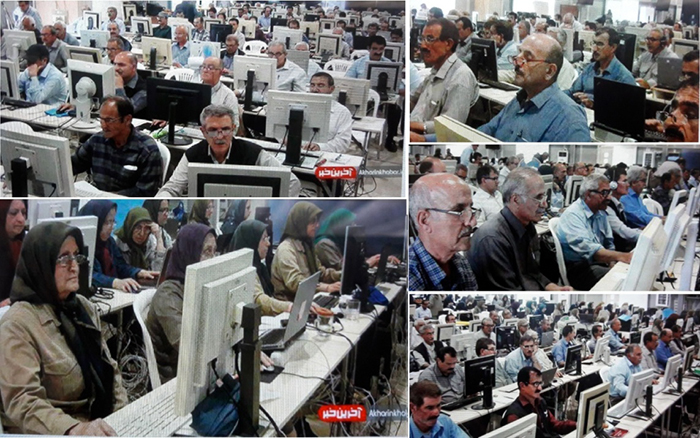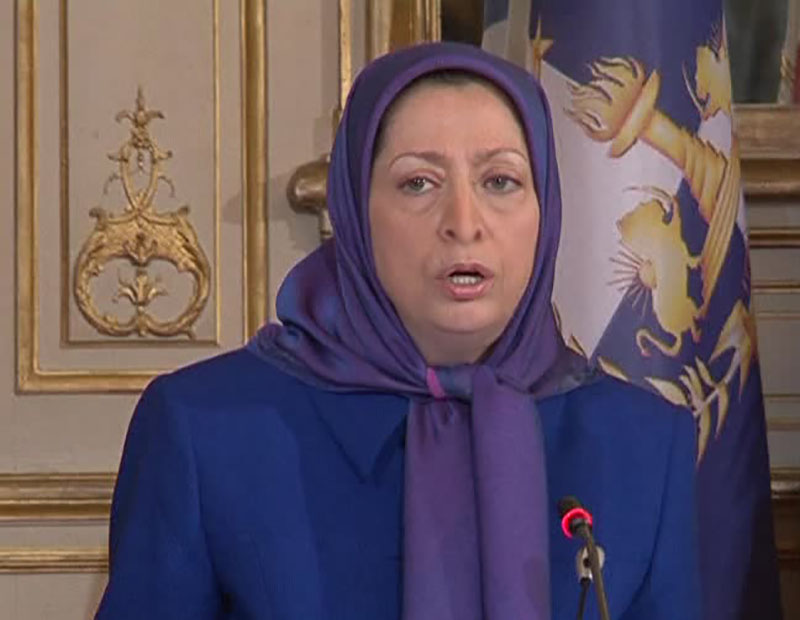Iranian forces carried out Defensive Operation Mersad on July 26, 1988, the last major military operation of the Iraqi imposed war in the western province of Kermanshah to successfully counterattack against the Mojahedin-e-Khalq (MEK) terrorist group backed by the US and Saddam Hussein.[1] Two days before the operation, MEK, who had gathered their forces on the Iranian-Iraqi border and were equipped with heavy weapons provided by Saddam, began invading Iranian territory. The MEK advanced under heavy Iraqi air cover, violating UNSCR 598, accepted by both Iran and Iraq, which would end the war on 8 August 1988.[2] Simultaneously with Operation Forough Javidan by the MEK, the Iraqi army bombed several Iranian villages around Kermanshah with Mustard and Nerve chemical weapons of mass destruction killing hundreds of Iranian civilians and injuring 2,300.[3] Not to mention that during the eight years of Iran-Iraq war more than 350 large-scale gas attacks were reported in the border areas,[4] and there is not even a single United Nation Security Council Resolution to condemn the use of chemical weapons; in fact, there could be one, but the United States vetoed the condemnation. Of course, MEK’s offensive failed, leaving thousands of martyrs. After the war, however, the organization continued its attacks against Iranian civilians and government officials. Out of nearly 17,000 Iranians killed in terrorist attacks over the past four decades, about 16,000 have fallen victim to MEK’s acts of terror.[5] The cult, despite its dark history, however, nowadays is being heavily funded by the US regime and Saudis to keep on moving by spreading fake news and propaganda through disinformation campaigns for the sole purpose of manipulating and provoking public opinion.

In February 2020, the New York Times interviewed 10 ex-MEK members who said that the MEK’s Albania camp had a troll farm.[6] A troll farm is an institutionalized group of internet trolls aimed to interfere in political opinions and decision-making. According to the Cambridge dictionary, a troll is someone who leaves an intentionally annoying or offensive message on the internet, in order to upset someone or to get attention or cause trouble. MEK’s Albania troll factory or troll farm promoted the opinions of MEK supporters under specific guidelines for specific reasons, spread fake news, and devoted itself to manipulate and provoke the public for rebellion and violence. Certain analysts such as Kenneth R. Timmerman and Paul R. Pillar also believe that the group hires protesters to shape public opinion in exile.[7] In an article published by The Intercept on 9 June 2019, two former MEK members claimed that “Heshmat Alavi” is not a real person, and that the articles published under that name were actually written by a team of people at the political wing of the MEK.[8] Alavi contributed to several media outlets including Forbes, The Diplomat, The Hill, The Daily Caller, The Federalist, and the English edition of Al Arabiya’s website. According to The Intercept, one of Alavi’s articles published by Forbes was used by the White House to justify Donald Trump Administration’s sanctions against Iran.
An Iranian Activist Wrote Dozens of Articles for Right-Wing Outlets. But Is He a Real Person?
In 2018, President Donald Trump was seeking to jettison the landmark nuclear deal that his predecessor had signed with…
theintercept.com
“We were always active in making false news stories to spread to the foreign press and in Iran,” Reza Sadeghi — a member of the MEK until 2008, involved in lobbying activities in the United States, as well as operations at the MEK’s former base at Camp Ashraf in Iraq — reveals in the interview. “At Camp Ashraf, there were computers set up to do online information operations. Over the years, this activity got more intense with the introduction of social media platforms like Facebook and Twitter.”
There are dozens, or maybe hundreds, of other networks in step with peremptory demands of some warmongering regime change advocates. Their objectives are to occupy minds and to distort histories, to disturb and to call forth the public, to use people as artillery support under a constant bombardment of provoking and fake news.
Iran International Network, Saudis’ Black Propaganda Machine
Iran International, launched in May 2017 shortly before presidential elections in Iran, is another London-based…
medium.com
[1] Kaveh Farrokh, “Iran at War: 1500–1988,” Oxford: Osprey Publishing, 2011.
[2] United Nations, “Search engine for the United Nations Security Council Resolutions,” http://unscr.com/en/resolutions/598
[3] Eric A. Croddy, James J. Wirtz, and Jeffrey A. Larsen, “Weapons of Mass Destruction: An Encyclopedia of Worldwide Policy, Technology, and History,” 2004. The actual casualties may be much higher, as the latency period is as long as 40 years. See Robin Wright, “Iran Still Haunted and Influenced By Chemical Weapons Attacks,” January 2014.
[4] Ali Karami, “Long Legacy,” cbrneworld, 2012, http://www.cbrneworld.com/_uploads/download_magazines/Long_legacy.pdf
[5] Hamid Reza Qasemi, 2016, “Chapter 12: Iran and Its Policy Against Terrorism” in Alexander R. Dawoody, “Eradicating Terrorism from the Middle East. Policy and Administrative Approaches,” Springer International Publishing Switzerland.
[6] Patrick Kingsley, “Highly Secretive Iranian Rebels Are Holed Up in Albania. They Gave Us a Tour,” The New York Times, 16 February 2020.
[7] Zaid Jilani, “Attendees Bused Into MEK Rally, Some Of Whom Don’t Really Understand What The MEK Is,” ThinkProgress, 26 August 2011.
[8] Murtaza Hussain, “An Iranian Activist Wrote Dozens of Articles for Right-Wing Outlets. But Is He a Real Person?” The Intercept, 9 June 2019.
by Mehrdad Torabi – medium.com


